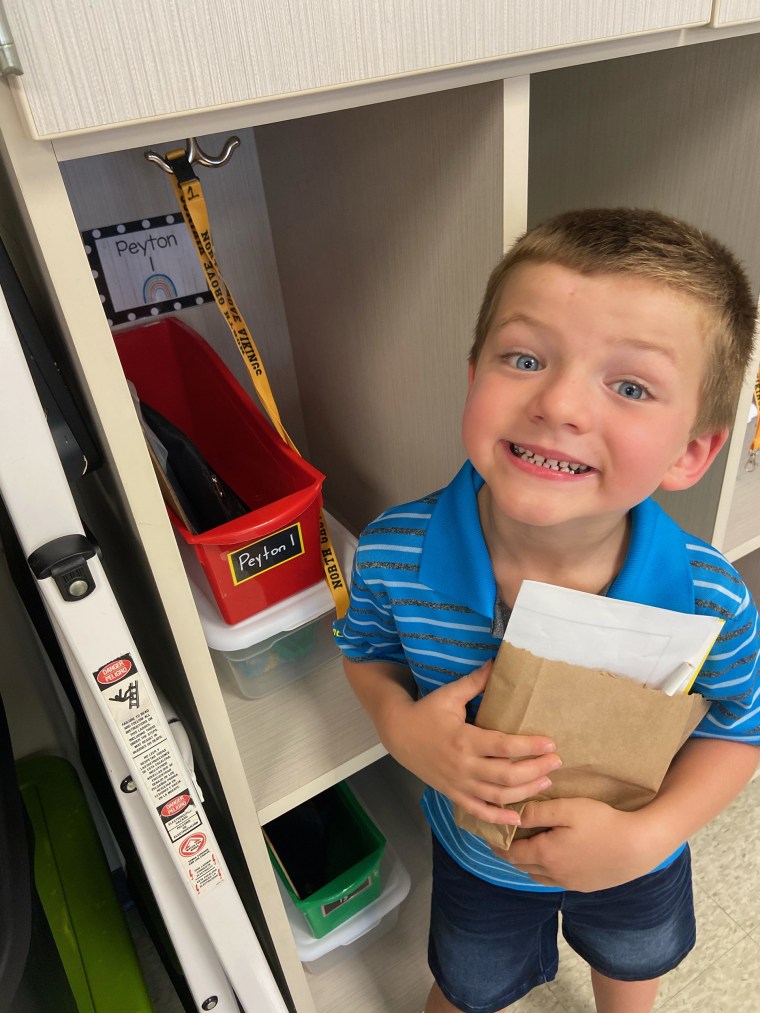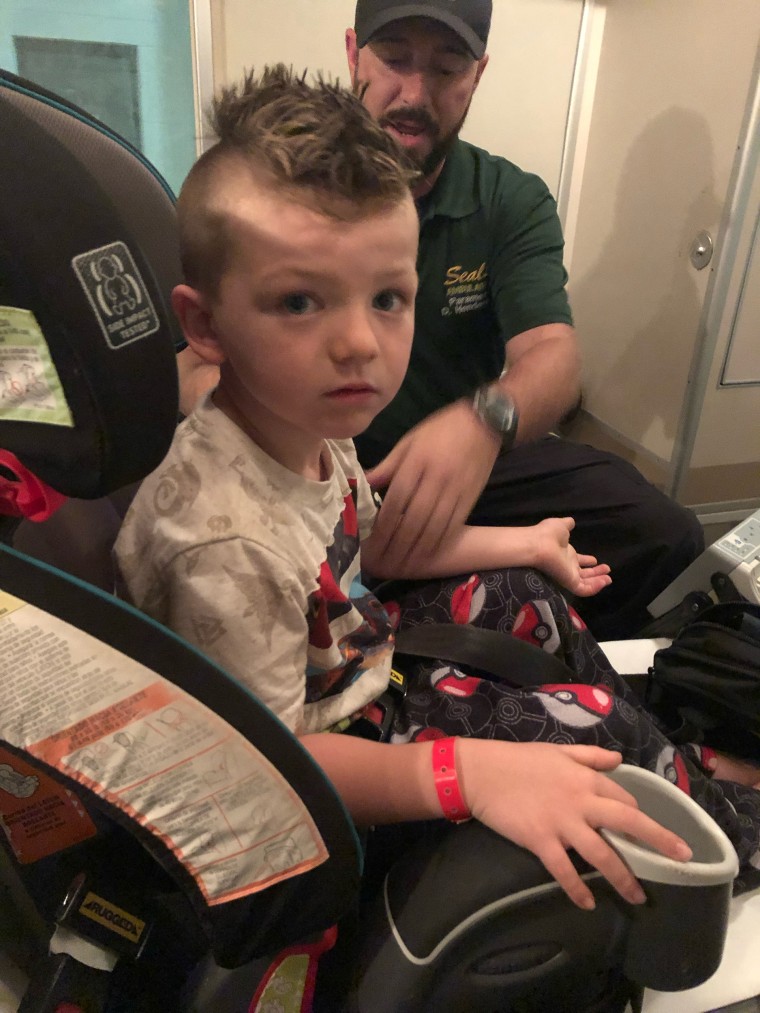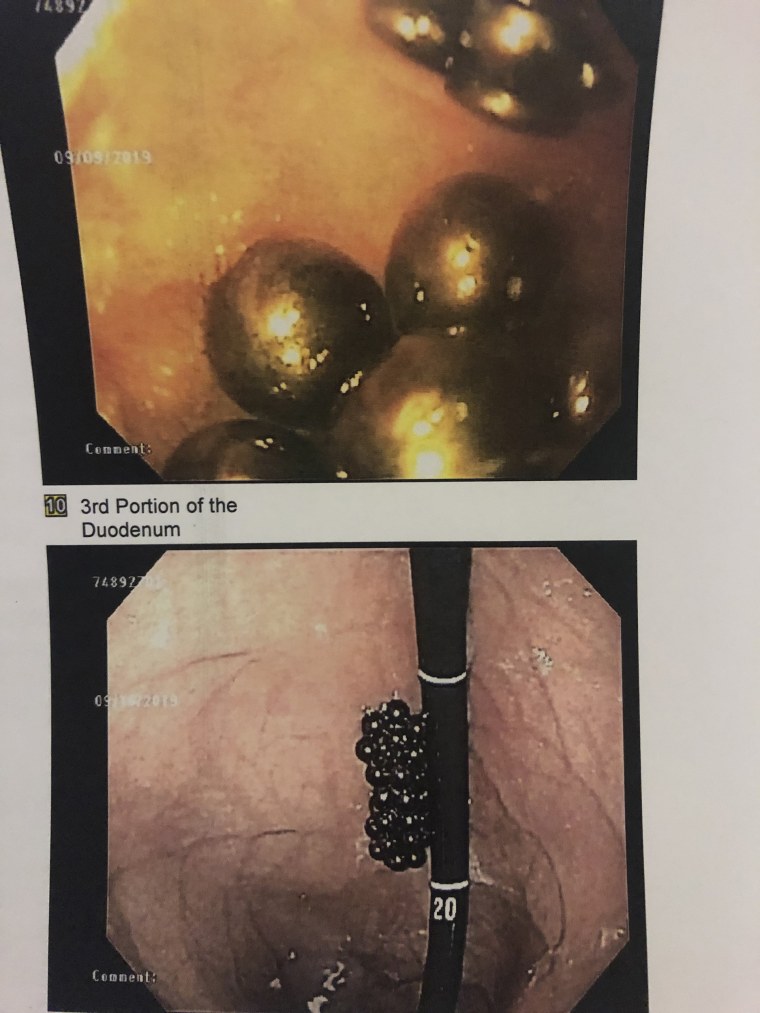Justin MacNair stepped out of the room for just a moment, but when he returned, his then 4-year-old stepson, Peyton, was crying a bit. He said he swallowed something and it was stuck in his throat. When MacNair’s wife, Jessica, peered into Peyton’s mouth, she realized what he swallowed and how dangerous it was.
“I looked in the back of his throat and saw two magnets stuck together, one on each side of his uvula,” the 32-year-old science teacher from Greenwood, Indiana, told TODAY.
Next she noticed the rest of the small, round magnetic balls were missing. When she couldn’t find them, she realized what had happened: Peyton swallowed them. They rushed to the local emergency room.
“He already had the two in his throat and there is a good chance he swallowed more than one and I knew that it was trouble,” she said. “They could tear through tissue and the body.”
Jessica MacNair is sharing Peyton’s experience to help other parents understand how hazardous neodymium magnets are.
“Most people don’t realize the dangers of swallowing magnets,” she said. “It can happen to anyone, and it can happen in a split second.”
Alone for minutes
In September 2019, Peyton was playing with his brother’s magnets with his dad and brother. Often, he made a long snake from the magnets: He loved how they attached to one another and slithered. Peyton, now 8, has autism and sometimes acts a little younger than his age, his mom explained.
As Peyton was playing, Justin MacNair received a call and stepped out of the room. Peyton's brother, who was 9 at the time, ran to the bathroom. When Justin MacNair returned after only a few minutes, Peyton was “whimpering” and “whining” about something in his throat. He later told his mom he was pretending to eat spaghetti, and she assumed the magnet snake turned into a magnet snack that he dangled over his mouth.

As soon as the family arrived at the local hospital, doctors took an X-ray and confirmed that 25 magnets were in his stomach in addition to the two clamped to his uvula. Doctors needed to act fast: If the magnets passed into the intestines, doctors might have to operate to remove them. He was transferred to Riley Children’s Health in Indianapolis, where doctors took another set of X-rays to confirm they hadn’t moved.
“It would be very easy for some magnets to be pushed (into the small bowel) and separated from the others,” she said. “That is when the others would be attracted and (magnetize) through the tissue.”
Dr. Michael Foreman, a gastroenterologist who treated Peyton, agreed that the danger of these tiny high-powered magnets is that they are still attracted to one another inside the body. If one gets caught in a mucosal fold (a fold in any mucous membrane in the body), it could pull through tissue to attach to another magnet in a different fold.
“These neodymium magnets, even if they are small, they can be really powerful. The size does not have anything to do with how powerful they are,” he told TODAY. “They have a strong pull.”

“They can end up giving you a hole in your bowel and that is the worst-case scenario. That can be devastating and result in surgery or resection,” Foreman added.
Most parents know when their children eat magnets, and Foreman urges taking your children to the emergency room if they have. If a child develops abdominal pain or an enlarged, tight, swollen belly that could be a sign that something has perforated internally and it then requires surgery. Over the years, high-powered magnets have been linked to thousands of injuries in children, from perforations to death.
In Peyton’s case, they believed they could get the 25 magnets from his duodenum, the top part of the small intestine, with a basket on the end of the scope. They inserted a long, thin tube, with the scope at the end, down his throat and first pulled the magnets into the stomach and then experienced a terrifying moment when the magnets disappeared and they feared they went back into the small intestine.
“The magnets, all (25) of them, attached to the side of the scope,” Foreman explained. “We were able to get them off and capture them.”

While the U.S. Consumer Product Safety Commission banned these magnets for a few years, in 2016 manufacturers were allowed to use them again. Since then, Foreman said doctors have seen an increase in the number of children swallowing magnets.
"We've seen cases triple, up to nearly 3,000 (a year)," he said. "There are few emergencies in pediatric gastroenterology and this is one of them."
What's more, a recent study published in Pediatrics found that warning labels on these magnets do little to prevent injuries, despite many manufacturers claiming the opposite. For the study, researchers interviewed 173 parents of children who'd either ingested or inserted a high-powered magnet into their body, and one adult patient who'd done so as a kid, about warning labels on the magnets.
In 53.6% of cases, the participants did not know whether a warning label was present on the magnet. Of the 28 people who reported seeing a warning label, less than half, 13, reported reading it. Overall, more than 90% of participants either didn't know if there was a warning label present or didn't read it.
The study also found that 58% of the magnets involved in the 174 cases were owned by a child — the injured child, a sibling or a friend — and almost 65% of parents said they stored the magnets within a child's reach. About 58% of parents said they knew that magnets were dangerous, but only 6.9% knew they'd been previously banned in the U.S. "Taken together, this suggests that parents may have underestimated their child’s vulnerability to magnet exposures," the study authors wrote.
Recovery and a warning
Doctors also had to remove the two magnets on Peyton's uvula, which only left some indents in the tissue. An X-ray revealed they removed all the magnets from Peyton’s body. Aside from a sore throat the next day from the scope and being intubated, Peyton felt great.
“He was fine after that,” MacNair said. “We immediately threw the magnets away.”

Now, they have no magnets or even small toys, such as marbles, in the house. MacNair said she knew swallowing magnets was an emergency because she saw it on “Grey’s Anatomy” and in news stories. She hopes Peyton's story helps raises awareness so others understand how dangerous it is.
“I still see parents buying these for their kids, and they are advertised as toys. They are fun to play with. I have played with them myself,” she said. “Most people don’t realize the dangers of swallowing magnets. Even if it is just one or two magnets ... they are going to tear through your child.”